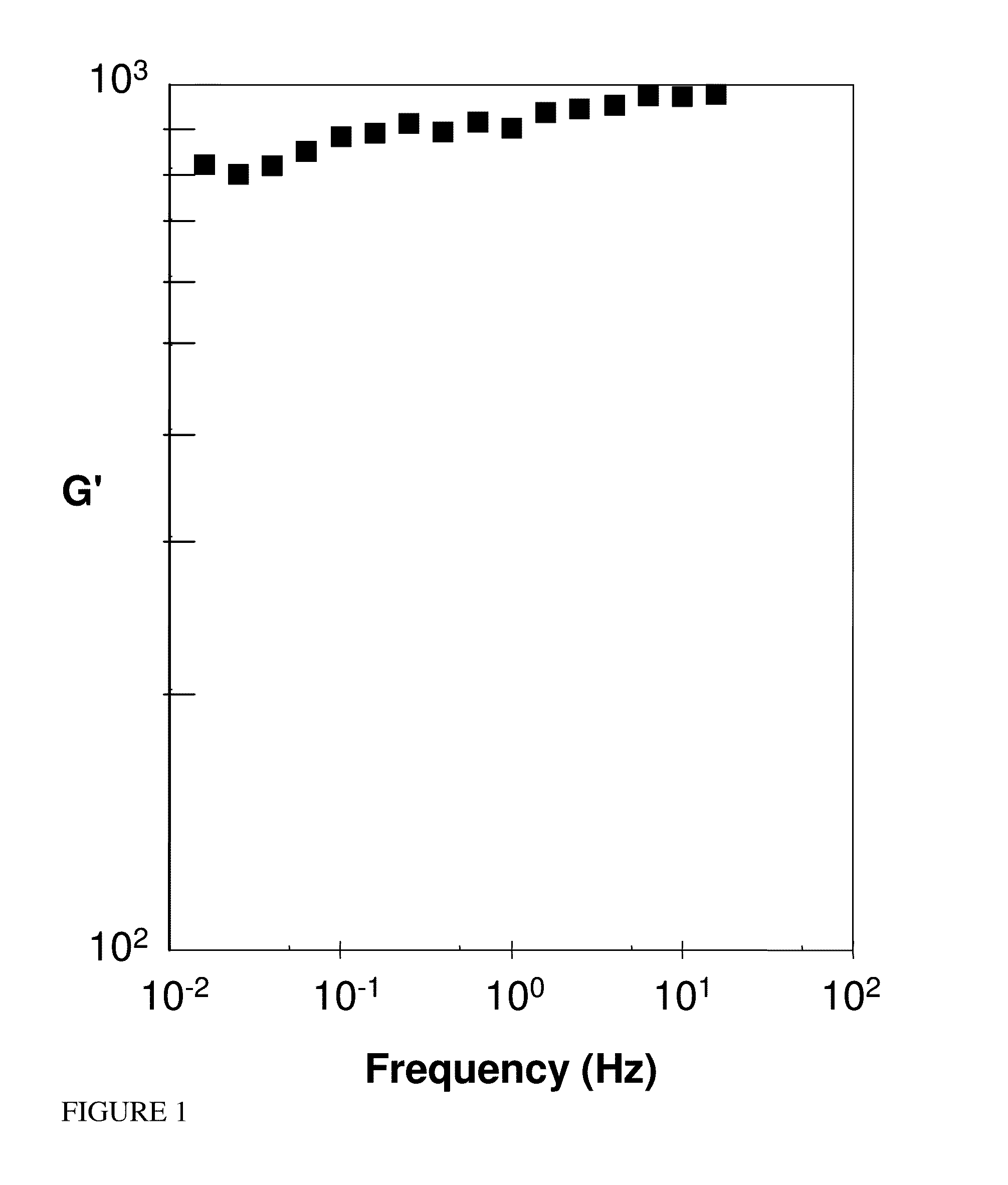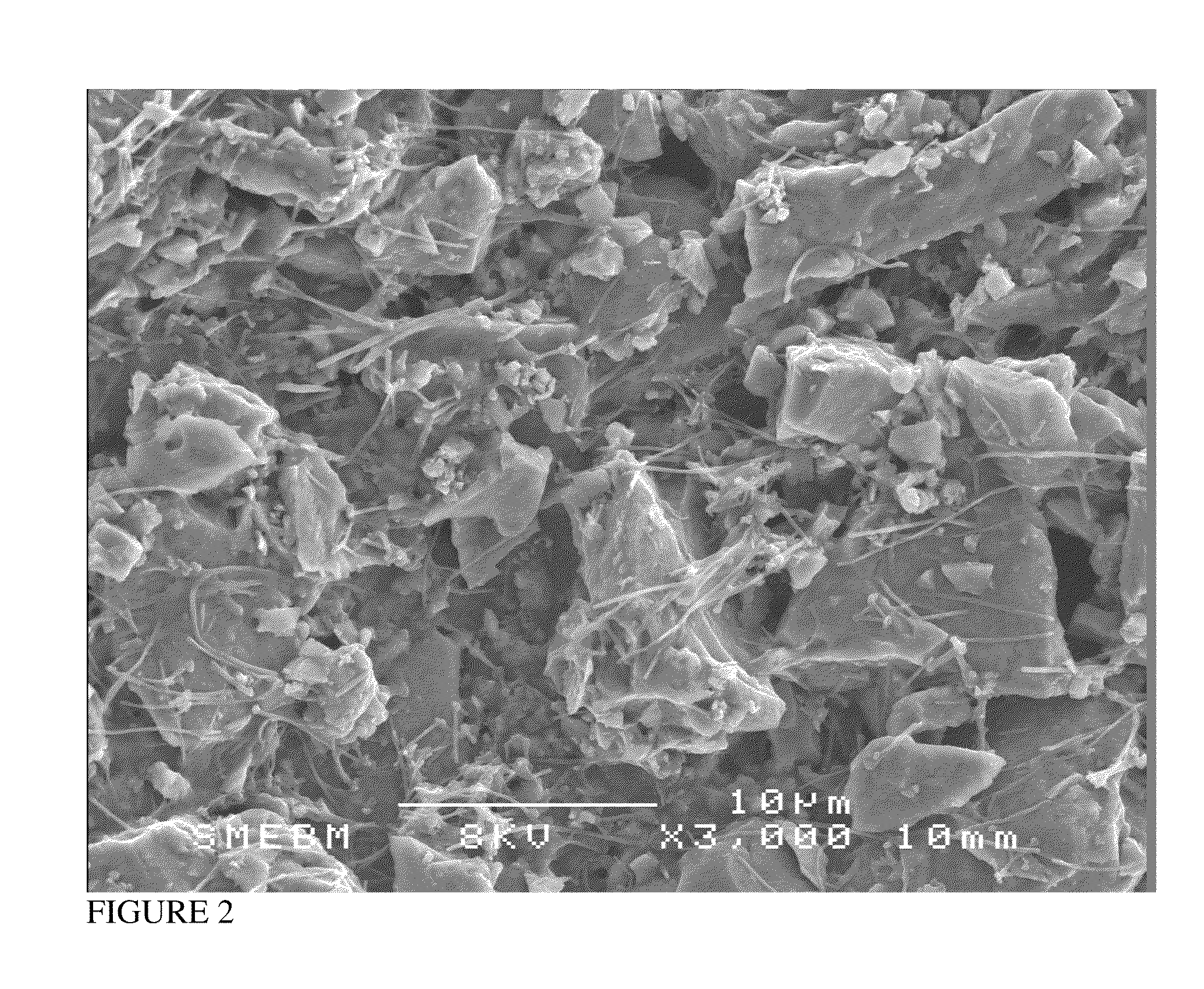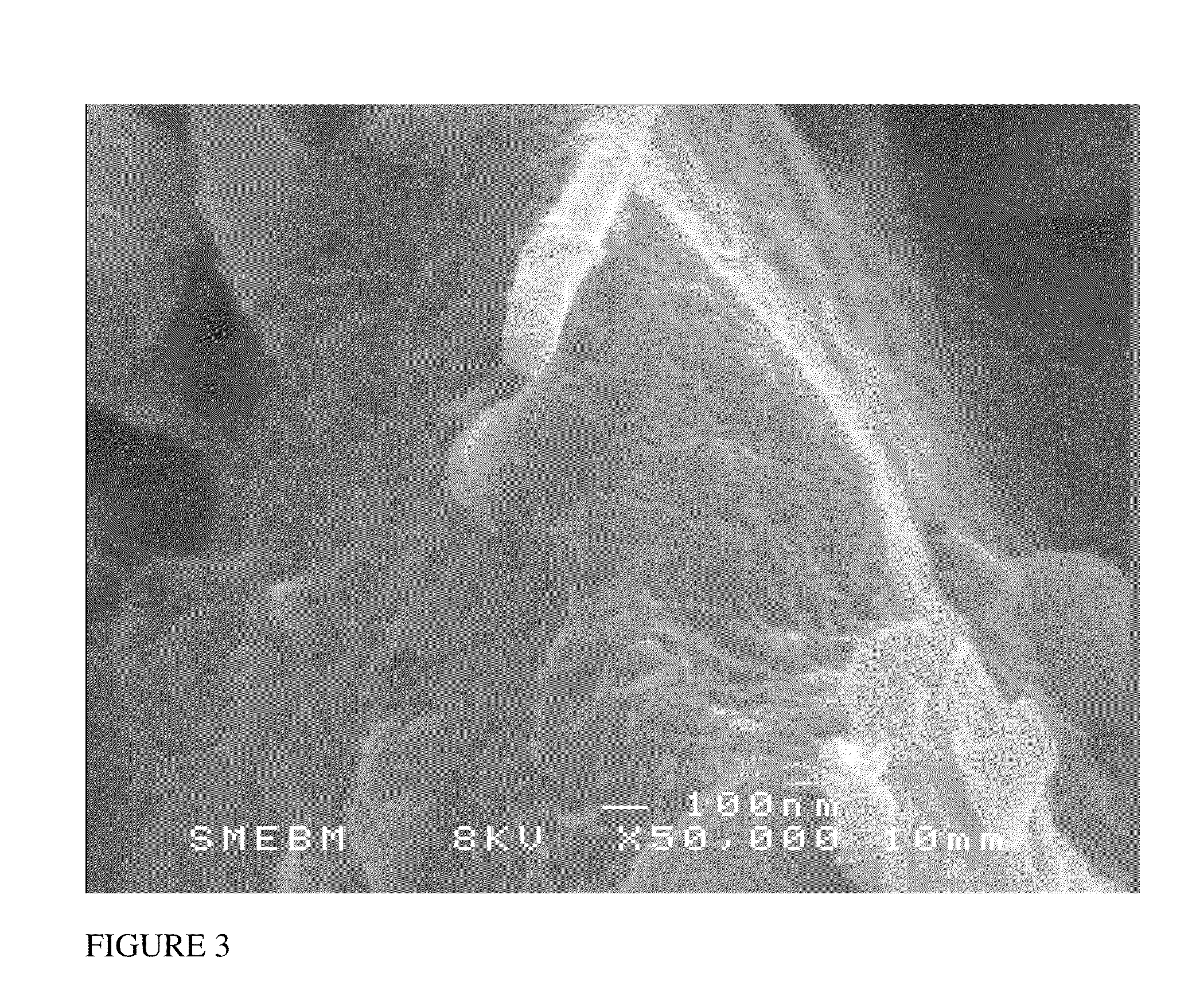Electrode composite, battery electrode formed from said composite, and lithium battery comprising such an electrode
a lithium battery and composite technology, applied in the field of electrode composites and battery electrodes formed from composites, can solve the problems of low internal resistance, inability to correct the problem in fact by existing solutions, and high cost per kwh stored, and achieve excellent cycling stability, low aspect ratio, and easy dispersion
- Summary
- Abstract
- Description
- Claims
- Application Information
AI Technical Summary
Benefits of technology
Problems solved by technology
Method used
Image
Examples
example 2
[0137]Example 2 was obtained with an electrode according to the invention and a battery, these being prepared as in Example 1. For Example 2, the amount of silicon deposited per cm2 of current collector was 1.80 mg.
[0138]The cycling was carried out at a constant specific capacity limited to 950 mAh / g within the potential range 0-1 V versus Li+ / Li. The cycling was controlled in galvanostatic mode at a current I of 900 mA / g, corresponding to a C mode (each charge / discharge cycle lasting 1.05 hours).
[0139]FIG. 5 shows the variation in the capacity Q (in mAh / g) as a function of the number of cycles N. After an induction period of a few cycles, which can be attributed to the rate of impregnation of the electrode with the electrolyte, very good capacity retention is observed when cycling in C mode. The retained capacity after the one hundred and fiftieth cycle is 900 mAh / g of silicon, i.e. 720 mAh / g of electrode.
[0140]In practice, the CNT / CNF mixture preferably lies within the following l...
example 3
[0144]The composite of this example consisted of 80% by weight of 1-10 μm, 99.999% pure silicon particles (from Alfa Aesar), 8% by weight of CMC binder (carboxymethyl cellulose, DS=0.7, Mw=90 000, from Aldrich) and 12% by weight of mixture of raw carbon nanofibres+raw carbon nanotubes.
[0145]All of the carbon nanotubes for the composition of the composite together with a small amount of CMC corresponding to 1% by weight of the electrode were firstly dispersed in deionized water using a ball mill (Fritsch Pulveristette 7). The dispersing conditions were 15 h at 700 revolutions / minute.
[0146]After the dispersing step, the silicon particles, the carbon nanofibres and the rest of the CMC were added, all this being mixed by comilling for 30 minutes at 500 revolutions per minute. The composite consisted of 28.57% by weight of the suspension, the rest being deionized water.
[0147]The electrodes were prepared by coating the suspension containing the composite on to a 25 μm thick copper current...
example 4
[0153]The composite of this example consisted of 83% by weight of 1-10 μm, 99.999% pure silicon particles (from Alfa Aesar), 8% by weight of CMC binder (carboxymethyl cellulose, DS=0.7, Mw=90 000, from Aldrich) and 9% by weight of mixture of raw carbon nanofibres+raw carbon nanotubes.
[0154]All of the carbon nanotubes for the composition of the composite together with a small amount of CMC corresponding to 1% by weight of the electrode were firstly dispersed in deionized water using a ball mill (Fritsch Pulveristette 7). The dispersing conditions were 15 h at 700 revolutions / minute.
[0155]After the dispersing step, the silicon particles, the carbon nanofibres and the rest of the CMC were added, all this being mixed by comilling for 30 minutes at 500 revolutions per minute. The composite consisted of 28.57% by weight of the suspension, the rest being deionized water.
[0156]The electrodes were prepared by coating the suspension containing the composite on to a 25 μm thick copper current ...
PUM
 Login to View More
Login to View More Abstract
Description
Claims
Application Information
 Login to View More
Login to View More - R&D
- Intellectual Property
- Life Sciences
- Materials
- Tech Scout
- Unparalleled Data Quality
- Higher Quality Content
- 60% Fewer Hallucinations
Browse by: Latest US Patents, China's latest patents, Technical Efficacy Thesaurus, Application Domain, Technology Topic, Popular Technical Reports.
© 2025 PatSnap. All rights reserved.Legal|Privacy policy|Modern Slavery Act Transparency Statement|Sitemap|About US| Contact US: help@patsnap.com



